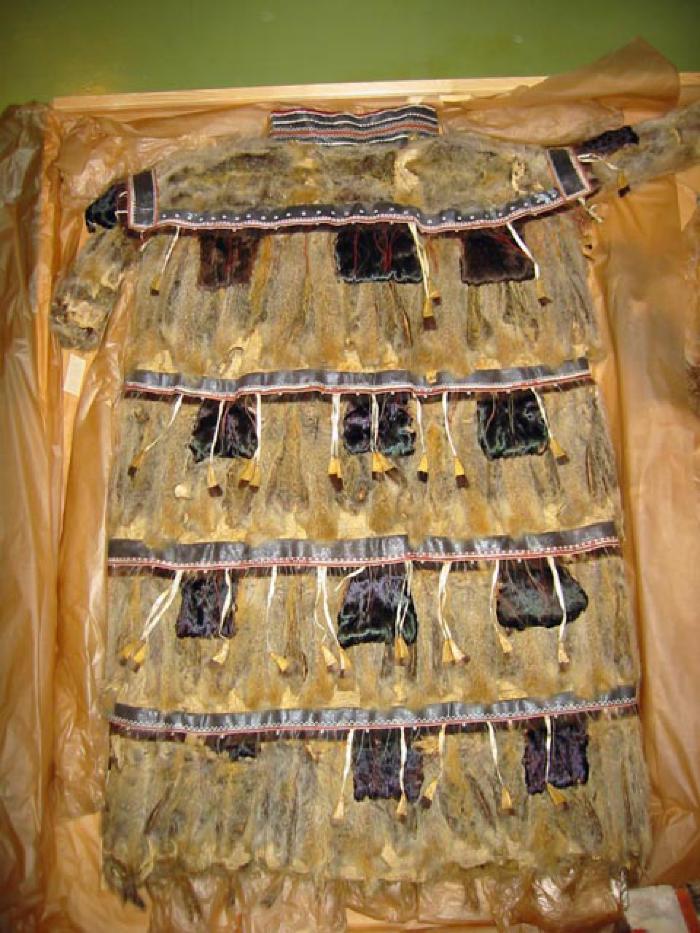Coat — Atkuk

Before the introduction of western clothing, Alutiiq men and women wore a long, hoodless robe made of fur and bird skin. Puffins, cormorants, and other sea birds provided the primary raw materials for elaborately decorated parkas. Bird hides were not formally tanned like sealskins, but were scraped and cleaned to soften the pelts. The number of pelts needed for each parka varied by species and garment design. One historic source reports that it took 150 cormorant neck skins to create a snow-falling parka, the style of garment worn by many Alutiiq dancers today. Cormorant neck feathers are a beautiful shimmering black color and very smooth.
The large number of bird hides needed for clothing each year illustrates the importance of bird hunting to the Alutiiq economy. If the majority of Alutiiq people had one bird skin coat per year, and Kodiak’s late prehistoric population was about 10,000 people, Alutiiq communities must have harvested tens of thousands of sea birds annually.
By the mid-nineteenth century, imported, easy to maintain fabric clothing began to replace skin garments. Fabric clothes were often worn indoors and traditional parkas donned as coats. Today, skin sewers are reawakening the parka tradition, replicating garments preserved in museum collections and creating traditionally styled clothing for use in cultural celebrations.
